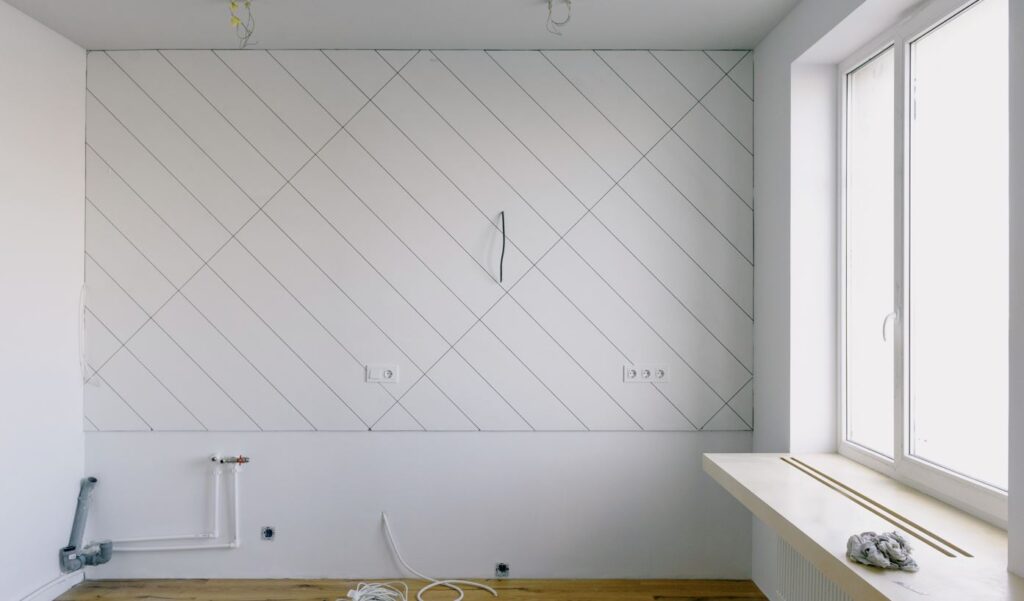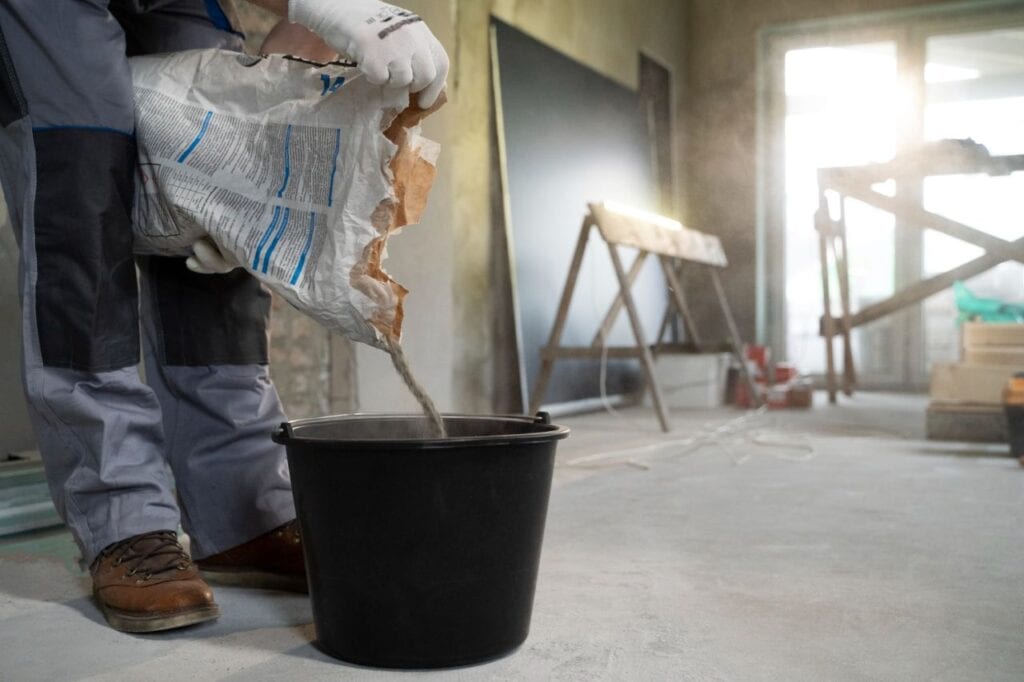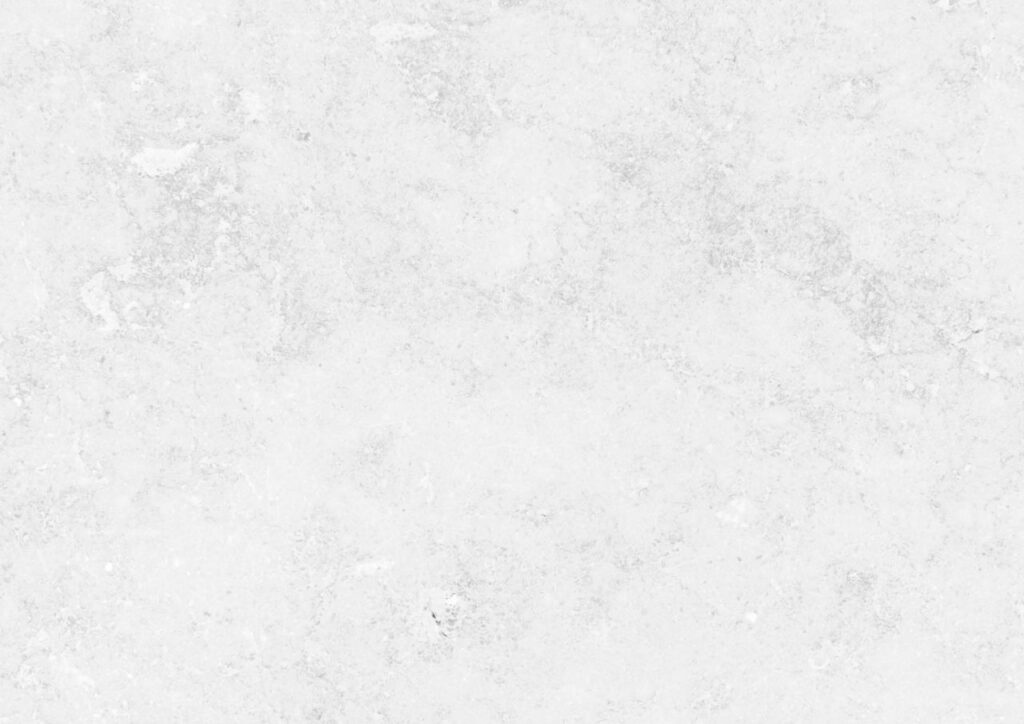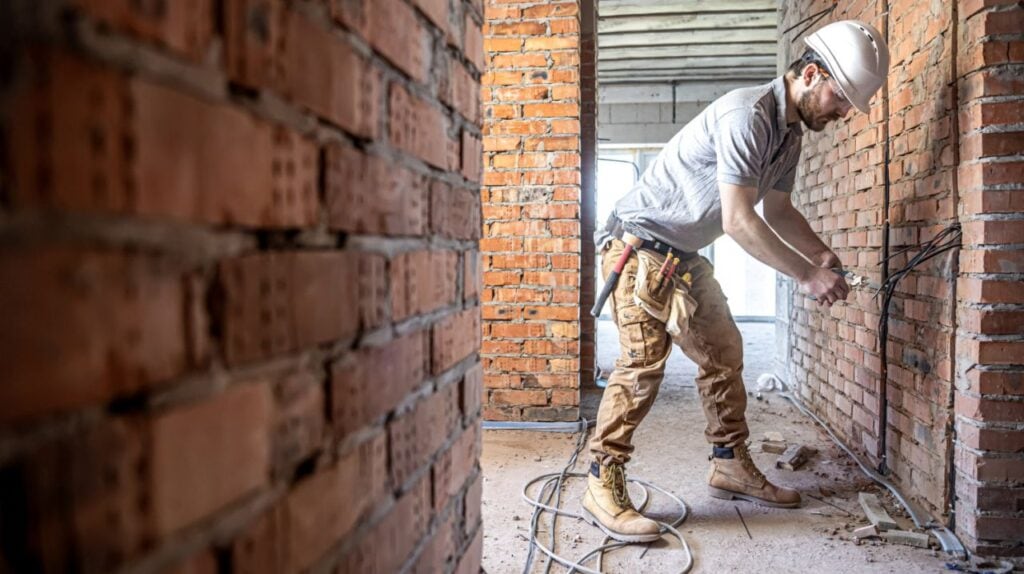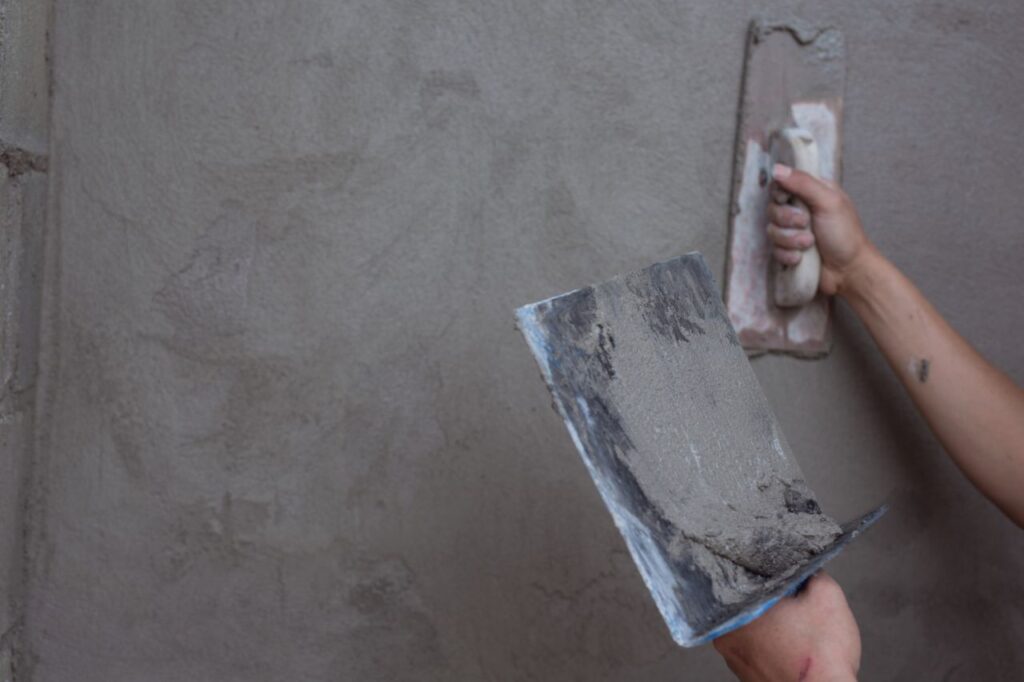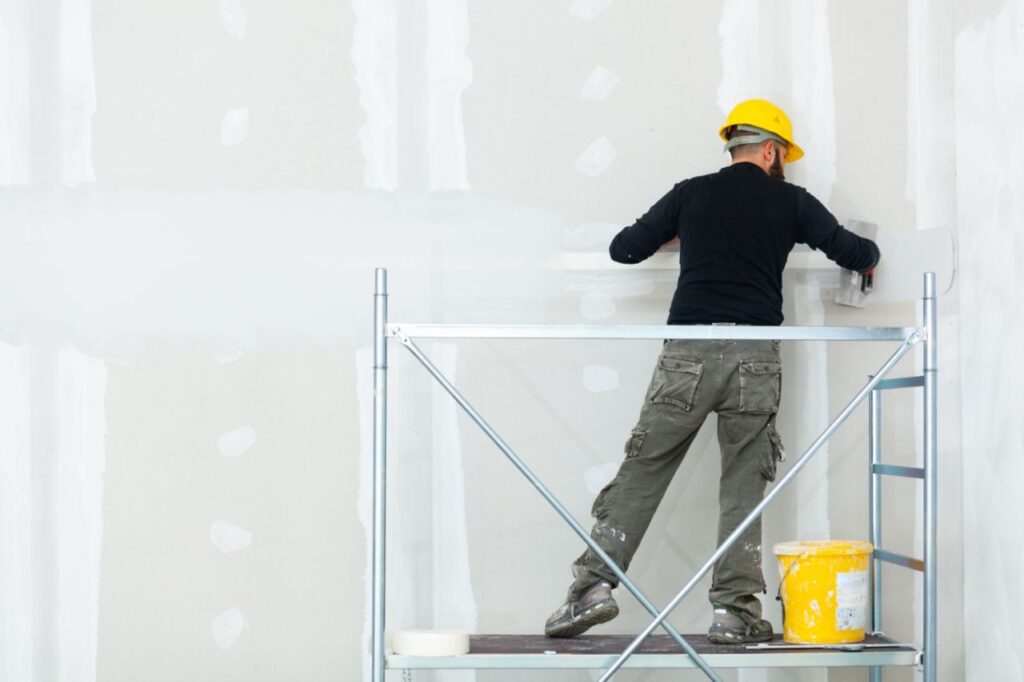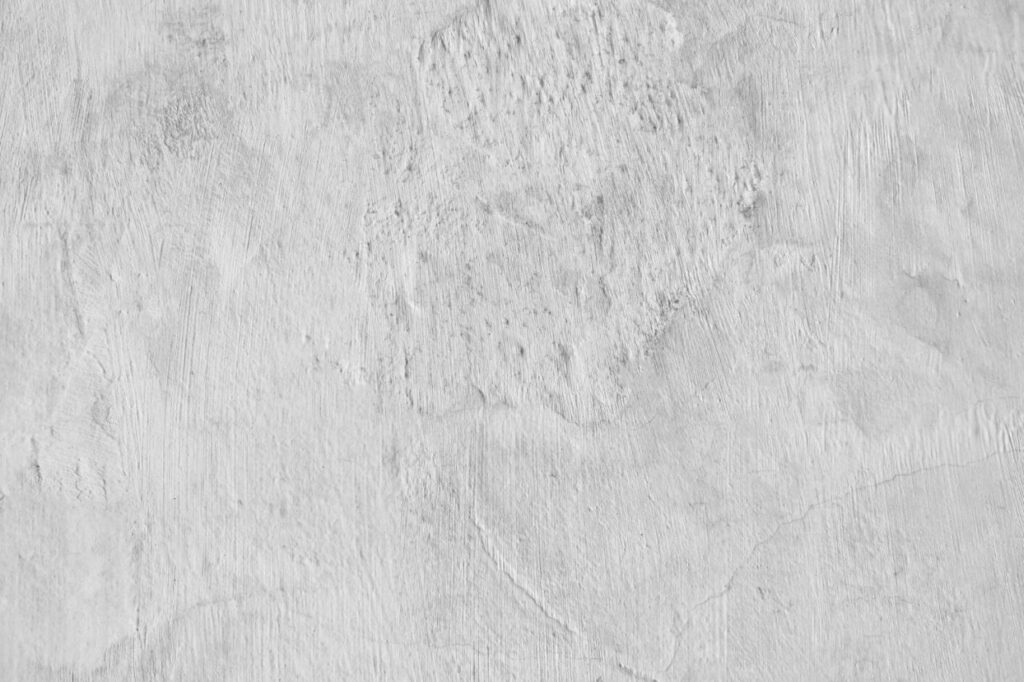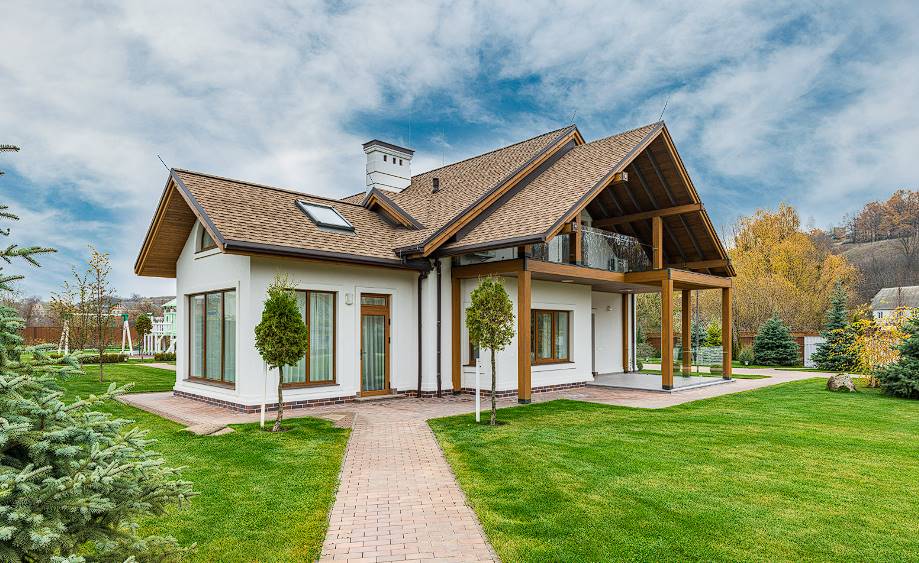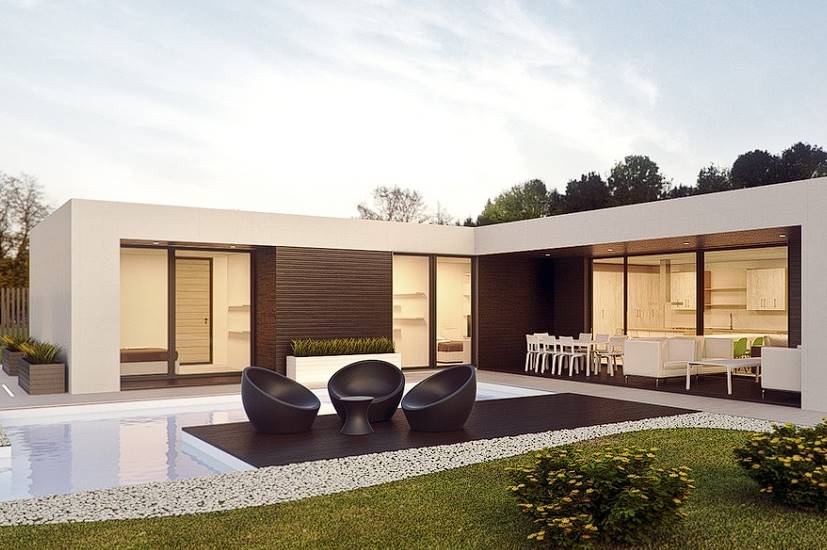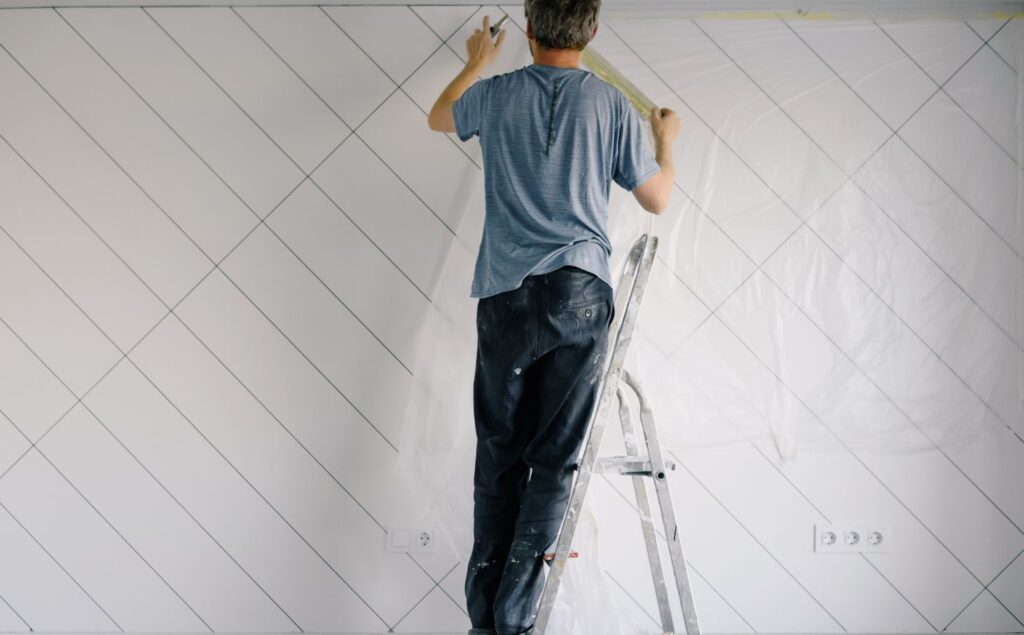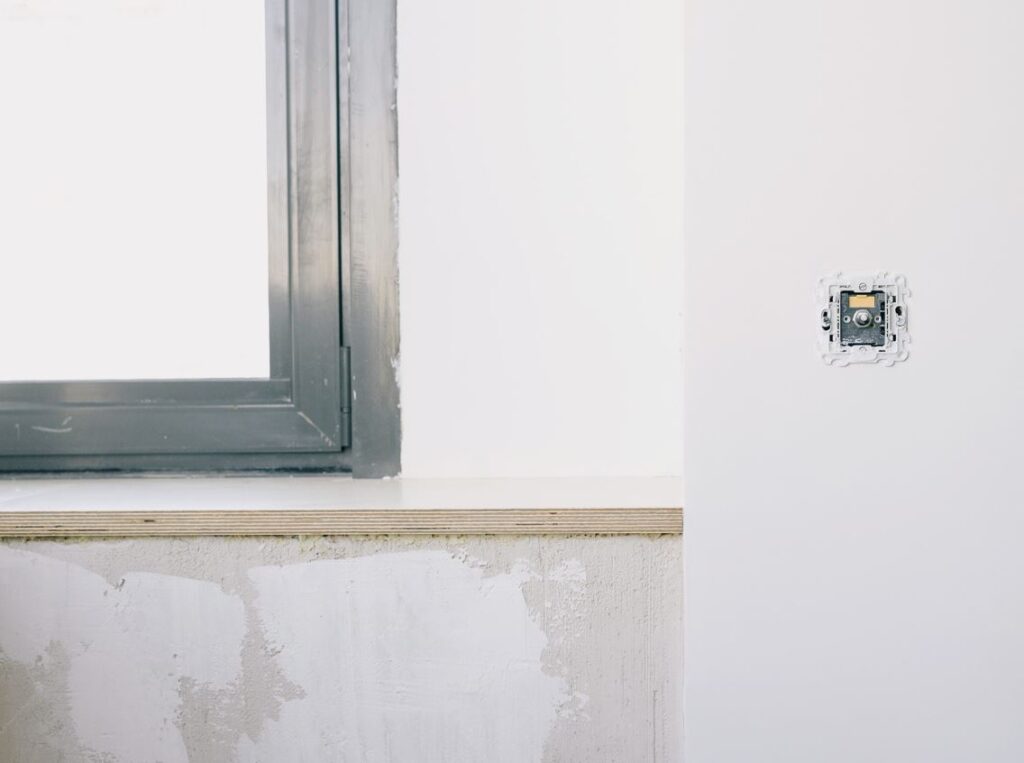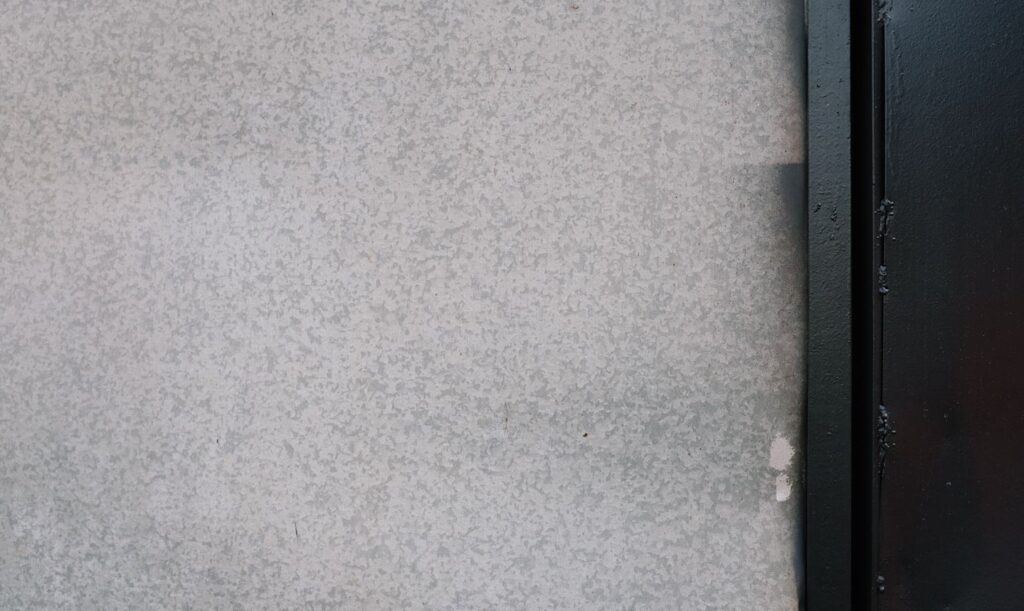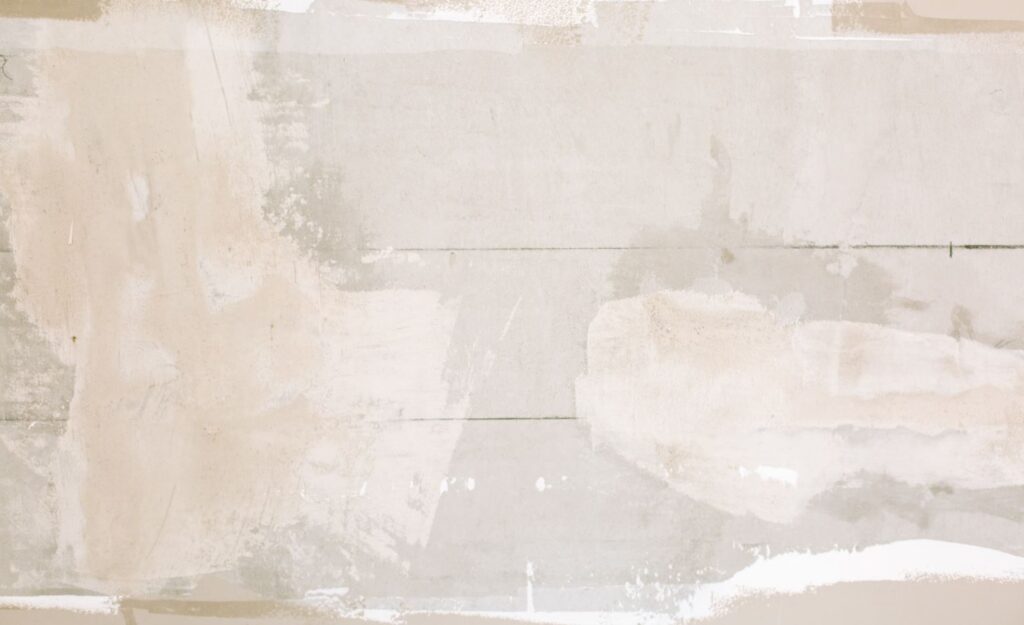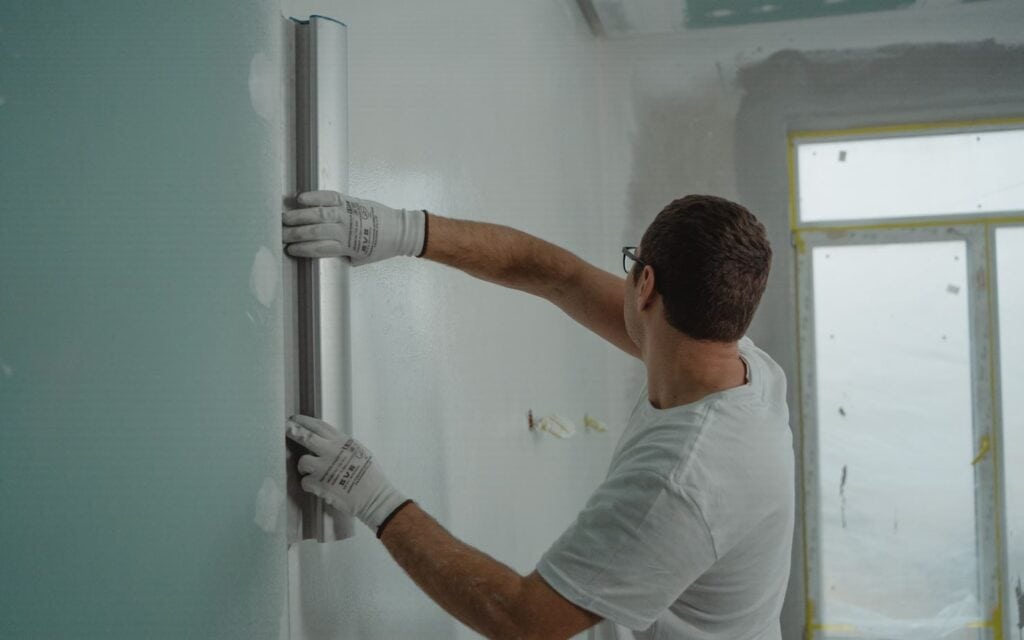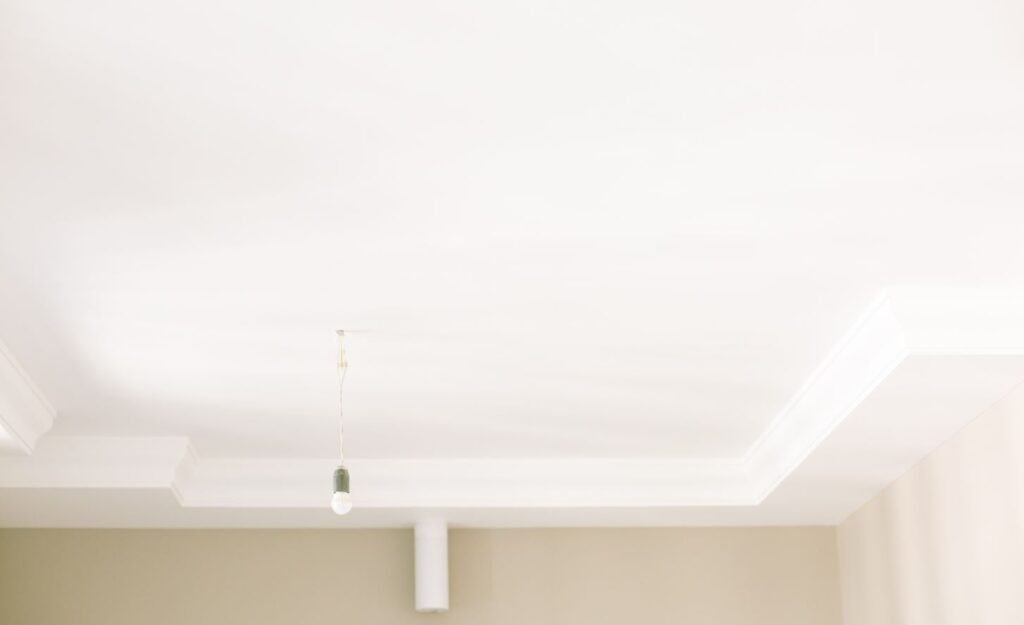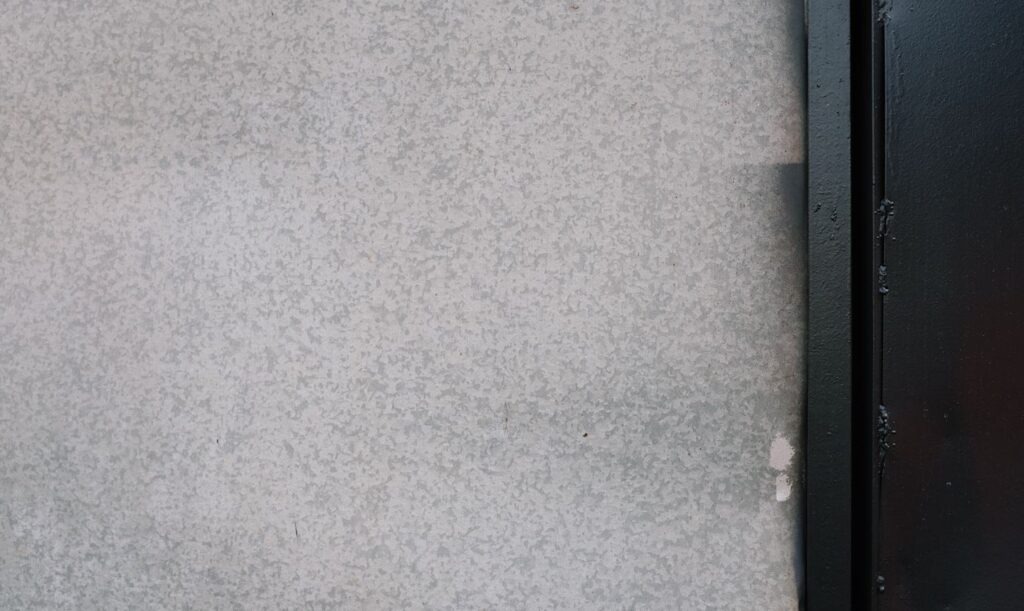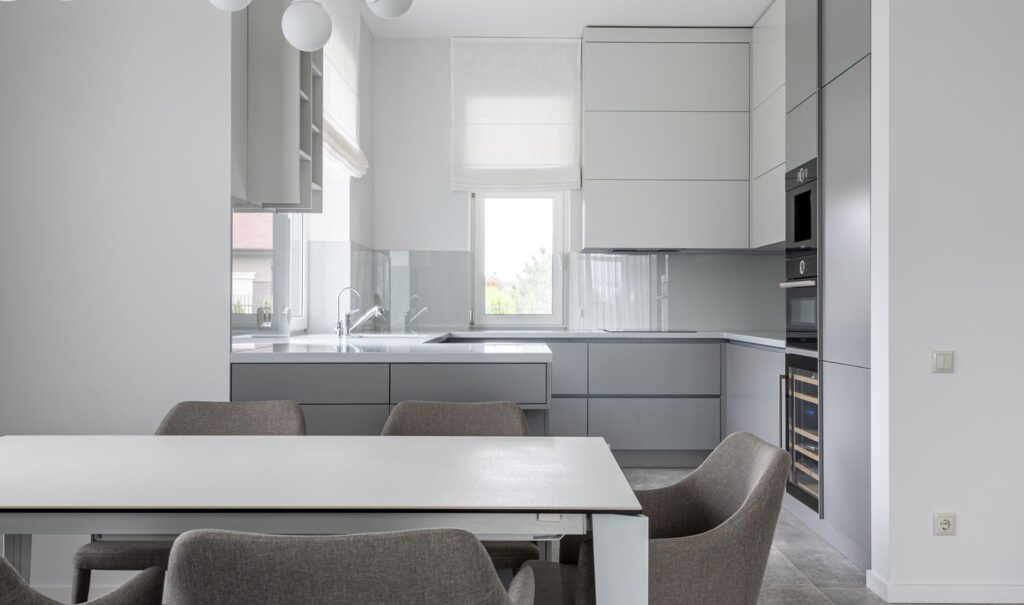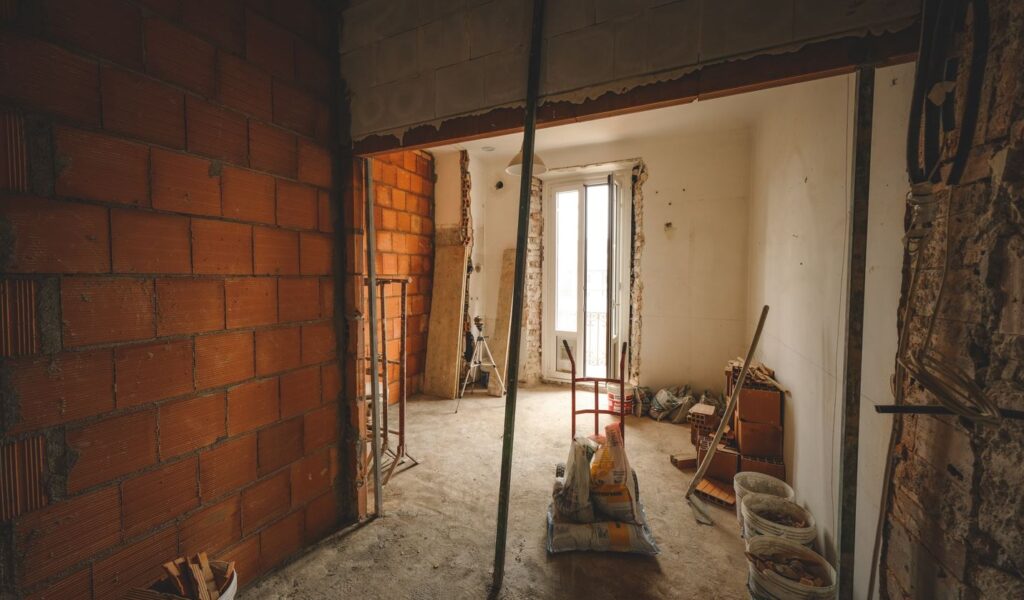Do you want to know how skim coating differs from plastering? These two methods are essential in home improvement & renovation because they allow for smooth and faultless walls.
Plastering and skim coating are frequently used to create a smooth surface on walls, which improves both their aesthetic and their longevity.
Nonetheless, there are notable differences between these methods that distinguish them. The skim coating creates a smooth finish by applying a thin layer, either rubber cement or a specialist skim coat solution, over a rough surface.
Plastering, on the reverse hand, calls for applying a heavy plaster combination in numerous layers to attain a sturdy and textured finish. Both processes call for expert execution and careful consideration of every detail, but they use different materials and yield different results.
If you're interested in learning more about the differences between skim coating & plastering, you've come to the right place.
Skim Coating
Walls and ceilings are skim coated in the building and remodelling industries to make them look uniform and smooth. An adhesive compound or plaster is applied in a thin layer over the surface of the wall or ceiling. Skim coating is applied to correct surface flaws like cracks, dents, and uneven textures before they are painted or wallpapered.
The first step in the skim coating is always surface preparation. In order for the skim coat to adhere properly, each wall and ceiling is prepared by cleaning, repairing, and priming. After that, water is added to the dry joint compound rather than plaster until the right consistency is reached. Thin skim coat layers, typically between 1/16 and 1/8 inch thick, are applied with a trowel or drywall knife. After the skim coat has dried, it is sanded to a uniform smoothness. It's possible to add more coatings if they're needed.
There are some pluses to using skim coating. Initially, it enables the hiding of flaws and the creation of a perfectly smooth wall or ceiling. Second, it produces a consistent and smooth surface, which is great for use as a wallpaper or paint primer. Skim coating, in the end, improves the room's visual appeal by giving itself a fresh, contemporary appearance.
Skim coating is ideal for experts and do-it-yourselfers since it is easier to understand and perform than other procedures. Due to the low resource and labour requirements, this approach saves money. Skim coating, on the other hand, should be reserved for small touch-ups and surface preparation then instead of large structural alterations.
The process of skim coating is widely utilised to create finishes that are both functional and aesthetically pleasing. It's a flexible method that may greatly benefit your walls and ceilings' aesthetic value. The skim coating may be a useful alternative for creating a pristine surface while remodelling your home or priming a room for new paint.
Process
The skim coating could be broken down into the following stages:
- Preparation: Skim coating requires a clean surface free of dust, grime, and other debris. For the skim coat to adhere correctly, a smooth and clean substrate is required.
- Priming: To improve adhesion and create a consistent finish, many people prime the surface before applying a skim coat.
- Mixing the Compound: The consistency of joint compound and plaster can be adjusted by adding water. This makes it simple to spread and guarantees a silky feel.
- Application: The skim coat is spread thinly using a trowel, plaster, or drywall knife. The idea is to apply a uniform coat that completely covers any flaws.
- Drying and Sanding: The skim coat requires drying time after application. The drying time can change based on environmental factors like temperature and humidity. After drying, mild sanding is used to round out the surface and remove any high spots.
- Finishing: Following sanding, the surface could need one more thin skim coat application for perfect smoothness. This process guarantees a professional finish.
Benefits
The numerous advantages of skim coating make it a favourite method of finishing:
- Repairing Imperfections: Cracks, holes, and textured surfaces are no match for skim coating's ability to conceal their correction. It aids in laying a faultless groundwork for additional embellishment.
- Enhancing Aesthetics: Walls and ceilings benefit greatly from skim coating because it creates a consistent and smooth surface. It gives any room a clean, contemporary aesthetic.
- Preparation for Painting or Wallpapering: Applying a skim coat to a surface makes it ready for finishing with paint or wallpaper. It prepares a pristine surface, essential for proper adhesion and an expert finish.
- Versatility: Drywall, plaster, or even textured surfaces are all suitable candidates for a skim coat application. It's a flexible method that can be used for various remodels.
- Cost-Effective: Skim coating can save you money compared to other procedures. It's a cheap way to create a polished look because it doesn't require much time or effort.
Skim coating is an indispensable method for creating a smooth and aesthetically pleasing finish. Skim coating is the best method for achieving a flawless surface, whether you need to fix defects or are simply getting ready to paint.

Plastering
Plastering is a thorough and time-tested method used in the building and remodelling industries to create visually impressive walls and ceilings. Plaster is a mixture of plaster, gypsum, lime, and cement that is applied in many coats to achieve a uniform surface that is both strong and visually appealing. Plastering is a precise art requiring experience, accuracy, and an eye for detail.
- The Art of Preparation: Plaster can be applied without thoroughly preparing the surface. Any debris, grease, or loose items on the ceilings or walls should be cleaned up. For the plaster to adhere properly, the surface must be free of any pre-existing paint, wallpapers, or other coatings. Filling materials are used to fix cracks, holes, and other flaws. Plastering properly depends on how well the surface has been prepared.
- The Perfect Mix: Getting the plaster to the appropriate consistency is essential for a good finish. When water is added to the plaster, a smooth paste is created. Plaster types, room temperature, and prefered application methods affect how much water should be supplied. Plasterers who have experience know how to mix the material just right so that it can be applied smoothly and adhere well.
- The Dance of Application: Plastering is an art that calls for finesse and precision. Plaster is applied to the surface with a trowel, and the plasterer works in small parts at a time. The plaster is applied in thin, even coats to create a uniform surface with no visible seams. The plasterer will use their skills to ensure the surface is even and free of bumps and divots.
- The Artistry of Texture: There is a wide variety of textures and finishes that may be achieved using plaster. Experienced plasterers can use various instruments and methods to alter the plaster's appearance and create unique effects. The options are practically limitless, ranging from clean and elegant to rustic and baroque. Plastering is an art form that, when done well, can elevate a room to the level of a piece of art by adding dimension, personality, and charm.
- The Patience of Drying and Curing: When the plaster has been put, it must dry and cure. Conditions like temperature, humidity, and plaster thickness can all affect how long it takes for a surface to dry. Proper drying and the avoidance of cracking depend on enough air circulation. Plaster hardens and strengthens during the curing process, creating a resilient and long-lasting coating. Having patience at this point is crucial for the plaster to cure properly.
- The Final Flourish: An experienced plasterer will carefully evaluate the surface for flaws after the plaster is dried and hardened. Sanding, polishing, or further plastering are used to smooth out and conceal any bumps, divots, or other imperfections. This finishing touch guarantees a faultless and spotless finish, ready for additional ornamentation or to stand alone as a monument to the plasterer's skill and competence.
- The Enduring Beauty of Plastering: Plastering's timeless appeal comes from its ability to transform otherwise boring backdrops into show-stopping features. Plastered ceilings and walls give a room a sense of classic sophistication and added style. Plastering is an art form that improves the visual attractiveness of any structure, whether it's a huge amazing achievement or a comfortable private dwelling.
Plastering is more than just a technique; it's an art that calls for a deep familiarity with the medium and a steady hand. Plastering takes surfaces to new levels of beauty and craft, from the initial surface preparation to the finishing touches. An expert plasterer's work may completely change the look and feel of a room, making an imprint that will remain for years.
Process
Plastering can be simplified into the following stages:
- Surface Preparation: Plastering preparation involves thoroughly cleaning and clearing the surface to be plastered of any dust, debris, or loose materials. Sometimes, you may need to strip off the old paint or wallpaper.
- Mixing the Plaster: A workable paste combines water and plaster. The plaster mixture's consistency should reflect the texture and method of application.
- Application of Coats: Plaster is troweled on in several thin layers. Each coat is given some time to dry in between applications. The required thickness and sheen will determine the optimal amount of applications.
- Smoothing and Texturing: The plaster is then sanded and textured to get the appropriate look while a final coat is put on. Textures and patterns can be made with various tools, from brushes to trowels.
- Curing and Drying: Plaster requires a drying and curing period after application. Conditions like temperature, humidity, and plaster thickness affect how long it takes to dry. Drying without cracking is impossible without adequate airflow.
- Finishing Touches: Any flaws or uneven spots are fixed after the plaster has dried completely. A smooth and flawless finish can be attained through sanding, polishing, or other smoothing procedures.
Benefits
Plastering has some advantages that make it a popular choice in interior wall & ceiling finishes.
- Unique and Textured Surfaces: Plastering enables the creation of unique and textured surfaces, which add dimension and personality to a space. Depending on the chosen aesthetic, the textures may range from smooth & elegant to rustic and baroque.
- Decorative Element: Plastering provides a decorative touch to an area, making it more visually appealing and engaging. It can be personalised with various patterns, designs, and sculptural components.
- Durability and Longevity: Plastering creates a long-lasting and resilient surface. Plaster that has been properly put can withstand damage from use and retain its integrity for many years.
- Enhanced Acoustic and Thermal Insulation: Plaster acts as an organic insulator, increasing a room's acoustics and thermal efficiency. It reduces noise transmission and, therefore, can aid with energy efficiency.
- Versatility: Plastering can be done on various materials, including brick, concrete, & drywall. It's a versatile technology that may be used for new construction and renovations.
Plastering is a skilled trade requiring knowledge and experience to create a high-quality finish. Skilled plasterers have the skills and techniques to produce aesthetically appealing and long-lasting surfaces that improve a space's overall aesthetic appeal.
Frequently Asked Questions About Plastering
Yes, a skim coating can effectively cover textured surfaces and create a smooth finish.
Plastering can be done on most surfaces, including drywall, masonry, and plasterboard.
Skim coating is generally more cost-effective than plastering due to using fewer materials and less labour.
The drying time depends on various factors, such as humidity, temperature, and thickness of the application. Generally, it can take a few hours to a few days.
It is possible to skim coat or plaster over existing paint, but proper surface preparation is crucial for good adhesion. It's recommended to consult a professional for the best results.
The Significant Differences Between Skim Coating And Plastering
Smooth and aesthetically pleasing surfaces can be achieved using two independent processes: skim coating and plastering. While the end goal of both techniques is to improve the look of ceilings and walls, they are fundamentally different in numerous significant ways.
Materials Used
When skim coating, joint compound and plaster are typically used. Plaster can be formed of gypsum, lime, and cement; a joint compound is indeed a gypsum-based substance. Plastering, on the other hand, necessitates the application of several layers of the material, which can be a combination of gypsum, lime, and cement.
Application And Thickness
To obtain a flawless finish during skim coating, only a thin coat of either compound or plaster is used. The typical thickness of a skim coat is between 1/16 and 1/8 of an inch. During plastering, however, larger coats of plaster are applied. Plaster coats can be thin or thick, depending on the final look and feel you want to achieve.
Required Skill And Expertise
Compared to plastering, skim coating may be less difficult to learn and perform. Its ease of use makes it a popular choice for do-it-yourself initiatives. The work of plastering, with a different hand, calls for additional experience and training. Applying numerous coats correctly, creating the right textures, and guaranteeing a uniform finish are all parts of the process. Plastering is often done by professionals who have spent years honing their skills.
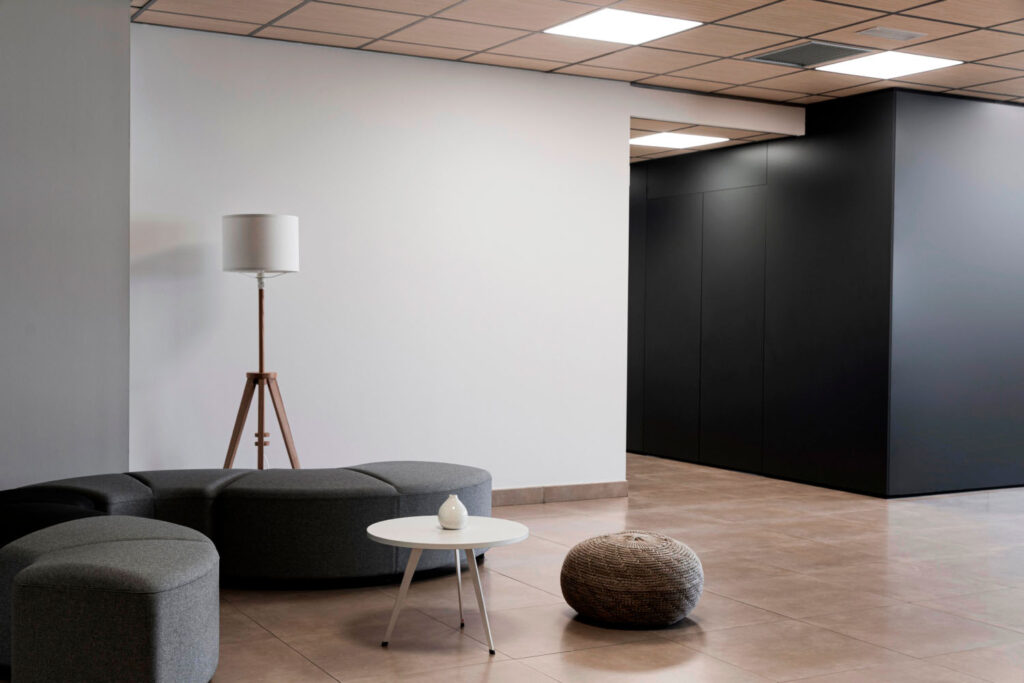
Cost
When compared to plastering, skim coating is typically more affordable. Skim coating is less expensive since it requires less time and effort to apply. With several layers and other labour-intensive methods, plastering might be more expensive.
Longevity And Durability
Plastering is typically more long-lasting and resilient than skim coating. Plastering's higher strength and resilience come from its thicker layers of plaster. While the skim coating is useful for surface repairs & preparation, it may not hold up as well as plaster.
These distinctions should be considered when deciding between skim coating over plastering. Which method is best will depend on things like the state of the surface, the desired finish, the cost of the project, and your personal preferences.
Which Method To Implement When Deciding Between Skim Coating And Plastering?
Several things should be considered while choosing between skim coating & plastering for your job. You can make a well-informed choice if you take the time to learn about the various methods and consider their advantages and disadvantages. Here are a few things to keep in mind when you make your selection:
- Surface Condition: Consider the surface's current state before beginning any repairs. The skim coating could be the best option if the surface includes minor flaws like cracks, dents, and uneven textures. Skim coating is a great way to cover up imperfections and get a clean slate before you start decorating.
- Desired Finish: Think about the result or goal you wish to accomplish. The skim coating creates a homogeneous and smooth surface, perfect for later decoration with paint or wallpaper. Plastering provides numerous options for creating a textured or elaborate surface. By using plaster, you may make interesting patterns and textures that give a space more personality.
- Project Budget: Take the project's finances into account. When compared to plastering, skim coating is typically less expensive. It is more cost-effective because less time and effort are needed to complete the project. There could be an increase in price due to the number of coats and labour involved in plastering.
- Skill and Expertise: Think about how well you know the technique and how well you can execute it. Skim coating is a good option for do-it-yourself jobs because it is simple to understand and perform. Yet, plastering calls for greater experience because of the several coats that must be applied and the need to get the texturing just right. It is recommended that you hire a professional if you are unsure about your plastering skills.
- Time Frame: Think about how long your project will take. In most cases, skim coating can be finished in a fraction of the time it would take to apply plaster. Skim coating is easier to apply and dry in a shorter amount of time. Plastering can add extra time to a project because of the various coatings and drying times required.
- Personal Preference: Finally, consider what you like and want the room to look like. The skim coating produces an attractive, contemporary, and smooth surface. But, the end product of plastering is more textured, artistic, and eye-catching. Select the method that best serves your goals and the mood you wish to establish.
Remember that a professional constructor or trained plasterer should be consulted for larger or more involved projects. You may count on them for professional counsel tailored to your unique requirements.
Surface condition, desired result, project budget, level of play, time limit, and personal preference are all factors to consider when deciding between skim coating & plastering. Consider all these details before settling on a course of action for your project.
Conclusion
Skim coating and plastering are fundamental processes in the remodelling and upkeep of residential properties because of their shared goal of producing a flawless wall surface. Plastering requires applying multiple layers of a thick plaster mixture to provide a durable and textured finish, whereas skim coating gives a smooth finish by putting a thin layer of adhesive compound or plaster over a rough surface. The results of each process are distinct, yet both call both excellent execution and attention to detail.
Skim coating's intuitive nature and reliable results make it a good choice for both professional and amateur painters. It's cheap and useful for minor repairs and surface prepping rather than major structural overhauls. Preparation, priming, compound mixing, application, drying, sanding, and finishing are all steps in the skim coating process.
Skim coating's many benefits include its ability to hide flaws, boost aesthetics, smooth out rough spots, prime surfaces for paint or wallpaper, and save money. For a smooth finish before painting or making repairs, this is a go-to material.
On the other hand, plastering is a tried-and-true technique used in construction and renovation to produce beautiful walls and ceilings. For a smooth, durable, and aesthetically pleasing finish, use plaster, which consists of plaster, gypsum, lime, and cement. For the right plaster mix and application, plasterers need experience, precision, and an eye for detail.
Plastering also involves the art of texture, with a vast range of options for textures and finishes. Skilled plasterers have a wide variety of tools at their disposal, allowing them to give the plaster a variety of different looks and textures, from smooth and beautiful to rough and baroque. Plastering and skim coating are crucial steps in achieving a spotless and aesthetically pleasing house. Plastering is a flexible and aesthetically beautiful technique for creating one-of-a-kind wall and ceiling finishes. Getting a professional-looking result takes training and expertise in the field.
Plaster a wall, one must first prepare the surface, mix the plaster, apply coats, smooth and texturise, cure and dry, and repair any imperfections or uneven patches. The many benefits of plastering—including its one-of-a-kind and textured surfaces, decorative components, endurance, increased acoustics and thermal insulation, and adaptability—make it a popular choice for transforming a room into a visually appealing and engaging space.
To get a finished product that is both smooth and aesthetically beautiful, you can employ either skim coating or plastering. Plastering takes multiple layers of material, but skim coating only needs one. Comparatively, plastering takes more time and effort to apply and maintain a uniform surface, whereas skim coating requires less ability and knowledge. Plastering is normally more durable and long-lasting than a skim coating, yet it may not hold up as well in some situations.
Surface condition, desired finish, project cost, and individual preference are all things to think about when deciding between skim coating and plastering. Plastering creates a uniform and smooth surface for further customisation with paint or wallpaper, while skim coating can hide minor faults like cracks, dents, and uneven textures. Plastering's versatility makes it a great material for personalising and enhancing the aesthetics of any room. In comparison to plastering, skim coating saves money but takes more time and work. It's more suited to do-it-yourself endeavours due to its ease of use.
For do-it-yourselfers, skim coating's lower skill and experience bar make it the superior option. Plastering, however, is a more involved process that calls for time and skill. As a result of its speed, skim coating is preferable for do-it-yourself jobs. When deciding between skim coating and plastering, it is also important to consider personal preference. If you need specific guidance for a big project, talk to a builder or a plasterer who has experience.
Content Summary
- Skim coating and plastering are essential methods in home improvement and renovation.
- Both methods aim to create smooth and faultless walls.
- Skim coating and plastering improve the aesthetic and longevity of walls.
- Skim coating involves applying a thin layer over a rough surface to create a smooth finish.
- Plastering requires applying heavy plaster in multiple layers for a sturdy and textured finish.
- Skim coating and plastering use different materials and yield different results.
- Skim coating is commonly used to make walls and ceilings look uniform and smooth.
- Skim coating corrects surface flaws like cracks, dents, and uneven textures.
- Surface preparation is crucial before skim coating to ensure proper adhesion.
- A thin layer of skim coat, typically 1/16 to 1/8 inch thick, is applied with a trowel or drywall knife.
- Skim coat layers can be added if needed.
- Skim coating hides flaws and creates a smooth surface.
- It provides a fresh, contemporary appearance to a room.
- Skim coating is ideal for experts and DIYers due to its ease of use.
- Skim coating saves money with low resource and labour requirements.
- Skim coating should be reserved for small touch-ups and surface preparation.
- It enhances the aesthetic value of walls and ceilings.
- Skim coating is a useful option for remodelling and priming rooms for new paint.
- Skim coating involves stages like preparation, priming, mixing the compound, application, drying and sanding, and finishing.
- It repairs imperfections and enhances the aesthetic appeal of walls and ceilings.
- Skim coating prepares surfaces for painting or wallpapering.
- It is versatile and suitable for various materials and remodels.
- Skim coating is cost-effective and provides a polished look with minimal time and effort.
- Plastering is a thorough and time-tested method for visually impressive walls and ceilings.
- Plaster is a mixture of plaster, gypsum, lime, and cement used in multiple coats.
- Surface preparation is essential for proper plastering.
- Plastering requires a precise mix of plaster and water for a good finish.
- It involves applying plaster in thin, even coats to create a uniform surface.
- Plastering allows for various textures and finishes.
- Experienced plasterers can create unique effects with different tools and methods.
- Plastering adds dimension, personality, and charm to a space.
- Proper drying and curing are crucial for plastering.
- Plaster hardens and strengthens during the curing process.
- Plastering requires evaluation and finishing touches for a flawless result.
- Plastered walls and ceilings add classic sophistication and style to a room.
- Plastering is an art form that elevates the visual attractiveness of any structure.
- Plastering involves surface preparation, mixing the plaster, application of coats, smoothing and texturing, curing and drying, and finishing touches.
- Plastering enables the creation of unique and textured surfaces.
- It provides a decorative touch and can be personalised with patterns and designs.
- Plastering creates a durable and long-lasting surface.
- It enhances acoustic and thermal insulation in a room.
- Plastering is versatile and can be done on various materials.
- Plastering requires knowledge and experience for a high-quality finish.
- Skilled plasterers produce aesthetically appealing and long-lasting surfaces.
- Skim coating uses joint compound and plaster while plastering uses plaster, gypsum, lime, and cement.
- Skim coating involves a thin coat while plastering uses larger coats.
- Skim coating is easier to learn and perform than plastering.
- Skim coating is more affordable than plastering.
- Plastering is more long-lasting and resilient than skim coating.
- Consider factors like surface condition, desired finish, project budget, skill and expertise, time frame, and personal preference when choosing between skim coating and plastering.

